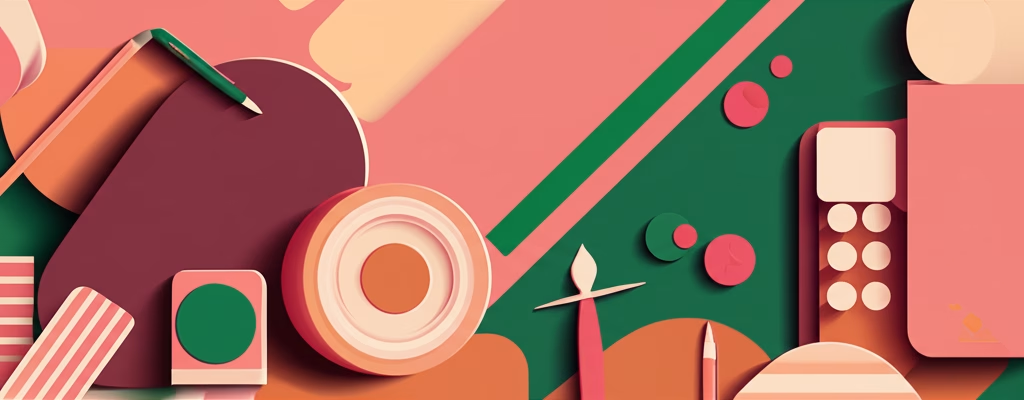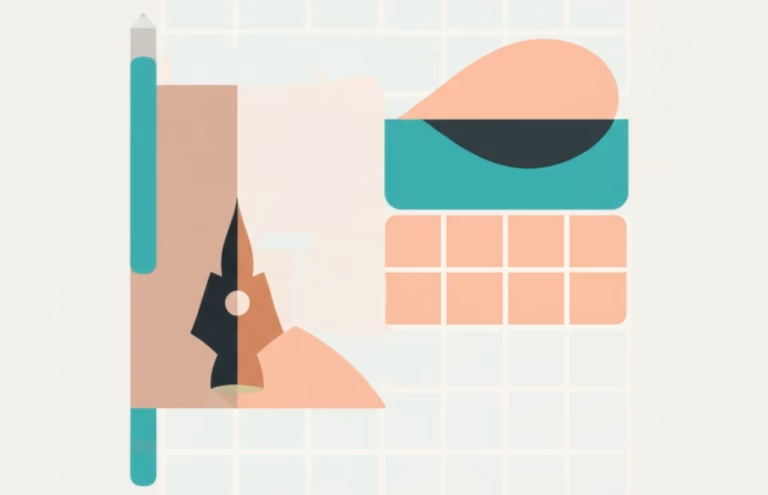Starting Your Creative Journey
Stepping into the world of design can feel like staring at a blank canvas – exciting, but maybe a little daunting. There are so many tools, terms, and techniques! You might wonder where to even begin or how to get past that initial hurdle. Don’t worry, everyone starts somewhere. The good news is that you don’t have to figure it all out alone. This is where learning resources become your best friends, guiding you step-by-step. In this post, we’ll explore how using helpful guides and practical lessons can make your learning process smoother, more effective, and truly enjoyable. Get ready to discover how to harness the power of readily available knowledge to build your creative skills!
Table of Contents
What Exactly Are Design Tips and Tutorials?
Think of design tips and tutorials as your personal learning compass. They are resources created by experienced designers to share their knowledge with you. A “tip” might be a quick piece of advice, like a shortcut in software or a clever way to use color. It’s usually short and focuses on one specific idea or technique. It’s a little nugget of wisdom that can save you time or improve your work instantly.
A “tutorial,” on the other hand, is more like a guided tour. It’s a step-by-step instruction manual that walks you through a specific process, like creating a logo, designing a website layout, or mastering a particular tool within design software. Tutorials break down complex tasks into manageable steps, making them easier to follow and understand. They can be found in various formats, including written articles, video demonstrations, or interactive guides, offering flexibility in how you learn.
Why These Learning Resources Matter for New Designers
For anyone just starting out in design, these resources are incredibly valuable. They provide a structured way to learn new skills without needing formal schooling right away. Tutorials help demystify complicated software interfaces and teach you the practical steps needed to create actual design pieces. They turn abstract concepts into concrete actions you can follow.
Tips offer quick insights that can immediately improve your work or efficiency. Learning little tricks from professionals can significantly speed up your progress and help you develop better habits from the start. Using these resources builds your confidence. Successfully completing a tutorial or applying a useful tip gives you a sense of accomplishment and motivates you to keep learning and trying new things. They are accessible, often free, and allow you to learn at your own pace, fitting into your schedule.
Key Principles for Using Design Resources Effectively
Simply consuming resources isn’t enough; how you use them makes a big difference in your learning journey. Approaching them with the right mindset and strategy will help you absorb information better and translate it into practical skills.
- Be Active, Not Passive: Don’t just watch or read; actively follow along. Open your design software and try the steps yourself as you go through a tutorial. Pausing and doing makes the information stick better.
- Start with the Basics: Resist the urge to jump into super complex projects. Begin with tutorials that cover foundational skills and simple tools. Mastering the fundamentals will make tackling advanced topics much easier later on.
- Consistency is Crucial: Try to dedicate regular time to learning, even if it’s just short sessions. Consistent practice is far more effective than infrequent, long bursts. Little by little adds up to significant progress over time.
- Understand the ‘Why’: Don’t just copy steps blindly. Pay attention to *why* the designer is making certain choices – why they chose that color, that font, or arranged elements in a specific way. Understanding the principles behind the actions is key to developing your own design sense.
- Experiment and Adapt: Once you’ve followed a tutorial exactly, try changing things. Use different colors, fonts, or images. See how altering elements affects the final result. This helps you move from imitation to innovation.
- Keep It Organized: Bookmark helpful articles or save tutorial videos you find valuable. Organize them by topic or skill level so you can easily revisit them when you need to refresh your memory or learn more about a specific area.
Applying these principles turns simple learning materials into powerful tools for skill development. It’s about engaging with the content, not just consuming it.
Common Pitfalls When Learning Design and How to Steer Clear
As you dive into learning design using online resources, you might encounter some common challenges. Recognizing these can help you avoid getting stuck or discouraged.
- Trying to Learn Everything at Once
How to Avoid: Focus on one specific area or software tool at a time. Master the basics before moving on to more advanced topics or trying to learn multiple programs simultaneously. - Only Watching Tutorials Without Practicing
How to Avoid: Make practice the core of your learning. For every hour you spend watching or reading, spend at least an hour actively working on the steps or applying the techniques. - Getting Discouraged by Complex Software
How to Avoid: Break down learning a new program into small steps. Start with simple tools and functions. Many tutorials are specifically designed for beginners to help you get comfortable gradually. - Copying Styles Instead of Understanding Principles
How to Avoid: Ask yourself *why* a design works. Analyze the use of color, layout, typography, and composition. Try to understand the underlying principles, not just replicate the visual outcome. - Not Saving or Organizing Resources
How to Avoid: Create a system for saving useful links, files, or notes. Use bookmarks, folders, or dedicated note-taking apps so you can easily find information when you need it again. - Comparing Your Beginner Work to Expert Portfolios
How to Avoid: Remember that everyone starts somewhere. Focus on your own progress and celebrate small wins. Compare your current work to your past work, not to seasoned professionals. - Giving Up When Facing Difficulties
How to Avoid: Learning takes time and effort. When you get stuck, take a break, re-watch the relevant part of the tutorial, search for alternative explanations, or ask for help in online communities. Perseverance is key. - Ignoring Feedback
How to Avoid: Share your practice work with others and be open to constructive criticism. Feedback from peers or mentors can provide valuable insights into areas where you can improve.
Awareness of these potential issues allows you to approach your learning more effectively and maintain motivation.
Putting Design Knowledge into Practice
Learning design isn’t just about accumulating information; it’s about developing the ability to create. The real magic happens when you take what you’ve learned from tips and tutorials and start applying it to your own creative endeavors. Here’s a simple way to make that transition.
- Replicate Tutorials Exactly: Start by following tutorials step-by-step, aiming to achieve the exact result shown. This helps you understand the sequence of actions and become familiar with the tools and workflows used. It builds muscle memory and software proficiency.
- Modify and Experiment: Once you can replicate a tutorial, challenge yourself to change aspects of it. Use different colors, swap out images, change the fonts, or rearrange elements. See how these changes impact the design. This is where you start developing your own creative voice and understanding design choices on a deeper level.
- Undertake Small Personal Projects: Apply the techniques learned in tutorials to simple, original projects. Design a social media graphic for a fictional event, create a simple business card concept, or design a basic webpage layout. These projects don’t need to be perfect, but they allow you to practice applying skills in a context beyond just following instructions.
- Seek and Incorporate Feedback: Share your practice projects with others – perhaps in online design communities or with friends. Ask for constructive feedback on what works and what could be improved. Learning to receive and apply criticism is a vital skill for growth in any creative field. Use the feedback to refine your work and identify areas for further learning.
- Build a Practice Portfolio: As you complete small projects, save your best work. Even practice pieces can start forming a collection that showcases your developing skills. This informal portfolio can be a great motivator and a way to track your progress over time.
- Identify Gaps and Learn More: As you work on projects, you’ll likely encounter challenges or realize there are things you don’t know how to do. Use these moments as opportunities to seek out new tips and tutorials specifically addressing those gaps in your knowledge. This creates a cycle of learning and application.
Actively engaging with the material and consistently practicing is the most reliable path to improving your design abilities and building a solid foundation for future growth.
Frequently Asked Questions (FAQ) about Design Learning Resources
Q: Do I need expensive software to start learning design?
A: No, absolutely not! While professional software is common, there are many excellent free or affordable alternatives like GIMP, Inkscape, Figma, or Canva that are perfect for beginners. Many tutorials are available for these programs too.
Q: How do I find good quality tutorials?
A: Look for tutorials from reputable sources like established design blogs, well-known educational platforms, or designers with proven experience. Check comments or reviews if available to gauge their effectiveness for beginners.
Q: Should I specialize in one area of design right away?
A: It’s often helpful for beginners to explore different areas (like graphic design, web design, illustration) using various tutorials to see what interests them most before deciding to focus on a specific niche.
Q: Is it okay to copy designs from tutorials exactly?
A: Copying exactly is fine for *practice* purposes to learn techniques. However, you should never present work copied from a tutorial as your own original creation for commercial use or in a professional portfolio. The goal is to learn the techniques and then apply them to your unique ideas.
Your Design Journey Continues
Embarking on your design path armed with practical tips and engaging tutorials is a fantastic way to build your skills. We’ve covered what these resources are, why they are invaluable for newcomers, effective ways to utilize them, common hurdles to avoid, and how to translate what you learn into actual creative work. Remember, learning is a continuous process, a journey of exploration and practice.
Every tip absorbed and every tutorial completed adds another tool to your creative belt. Don’t be afraid to experiment, make mistakes (they are part of learning!), and keep creating. The design world is vast and exciting, and with consistent effort and smart use of available resources, you are well on your way to finding your place within it. Keep practicing, keep learning, and most importantly, enjoy the process of bringing your ideas to life!



